
How to Use TP5100: Examples, Pinouts, and Specs
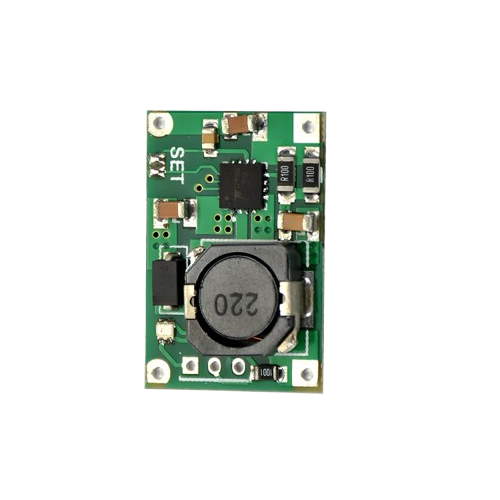
 Design with TP5100 in Cirkit Designer
Design with TP5100 in Cirkit DesignerIntroduction
The TP5100, manufactured by Electronics Hut (Part ID: CHMOD), is a high-efficiency linear voltage regulator designed for low-dropout applications. It provides a stable and reliable output voltage with minimal power loss, making it ideal for battery-powered devices. The TP5100 is equipped with features such as thermal protection, adjustable output voltage, and high efficiency, ensuring optimal performance in a wide range of applications.
Explore Projects Built with TP5100
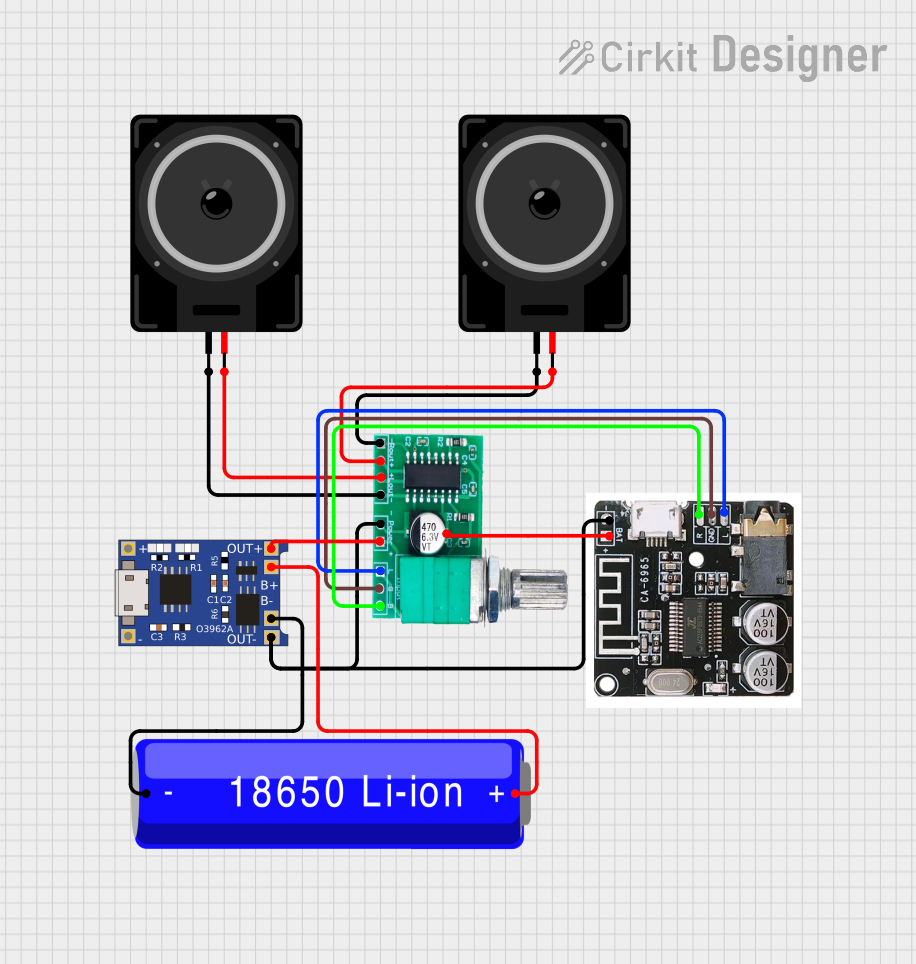
 Open Project in Cirkit Designer
Open Project in Cirkit Designer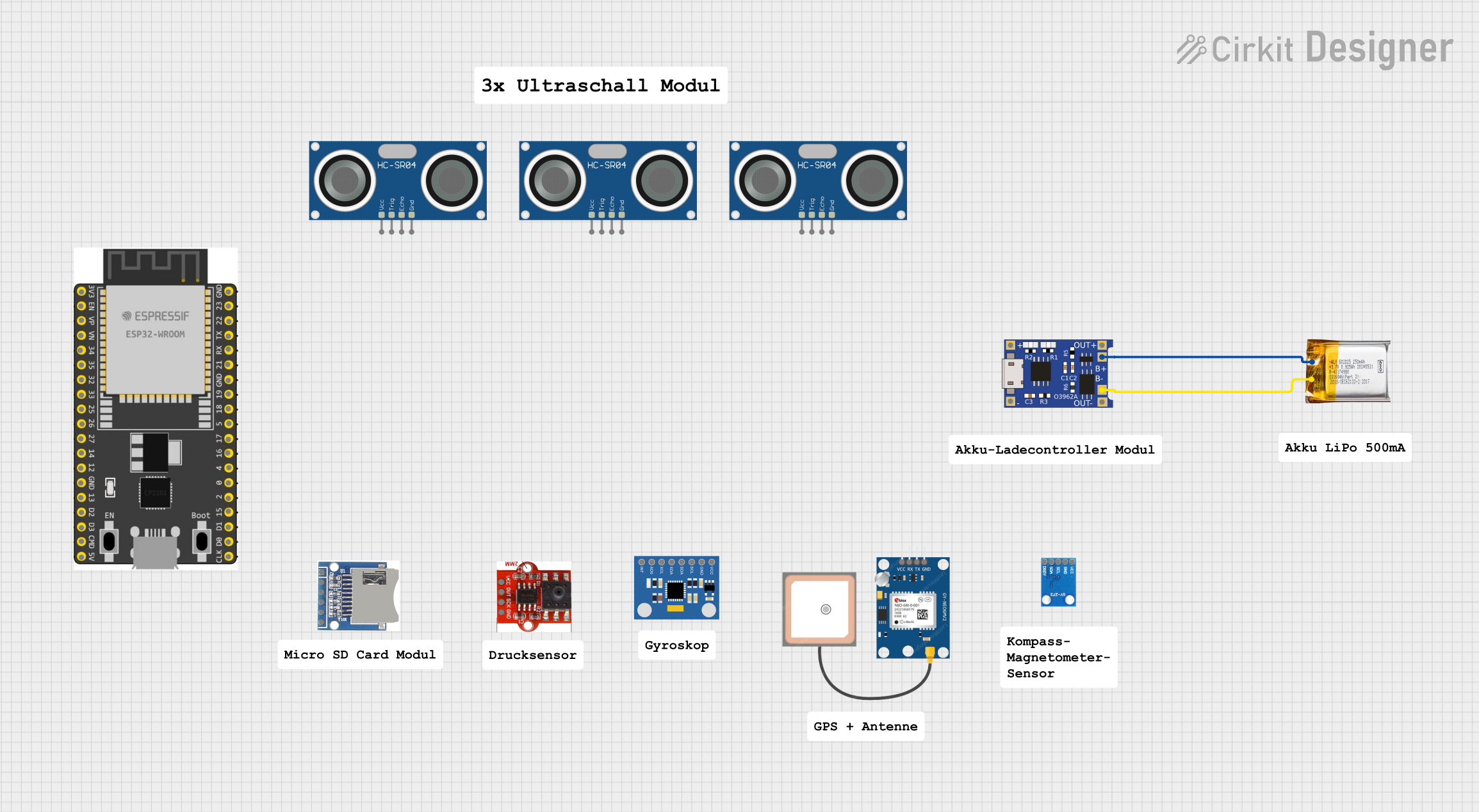
 Open Project in Cirkit Designer
Open Project in Cirkit Designer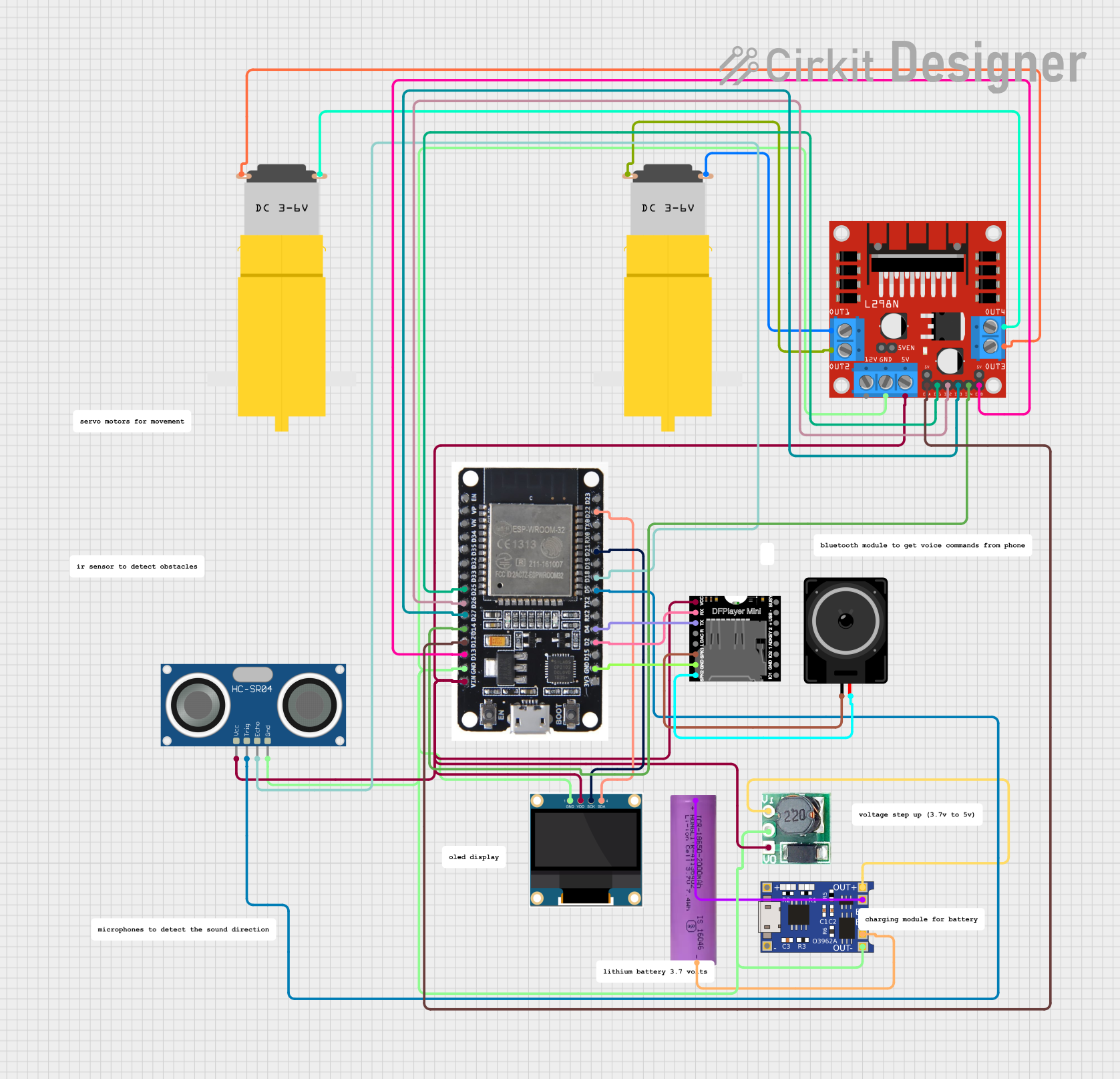
 Open Project in Cirkit Designer
Open Project in Cirkit Designer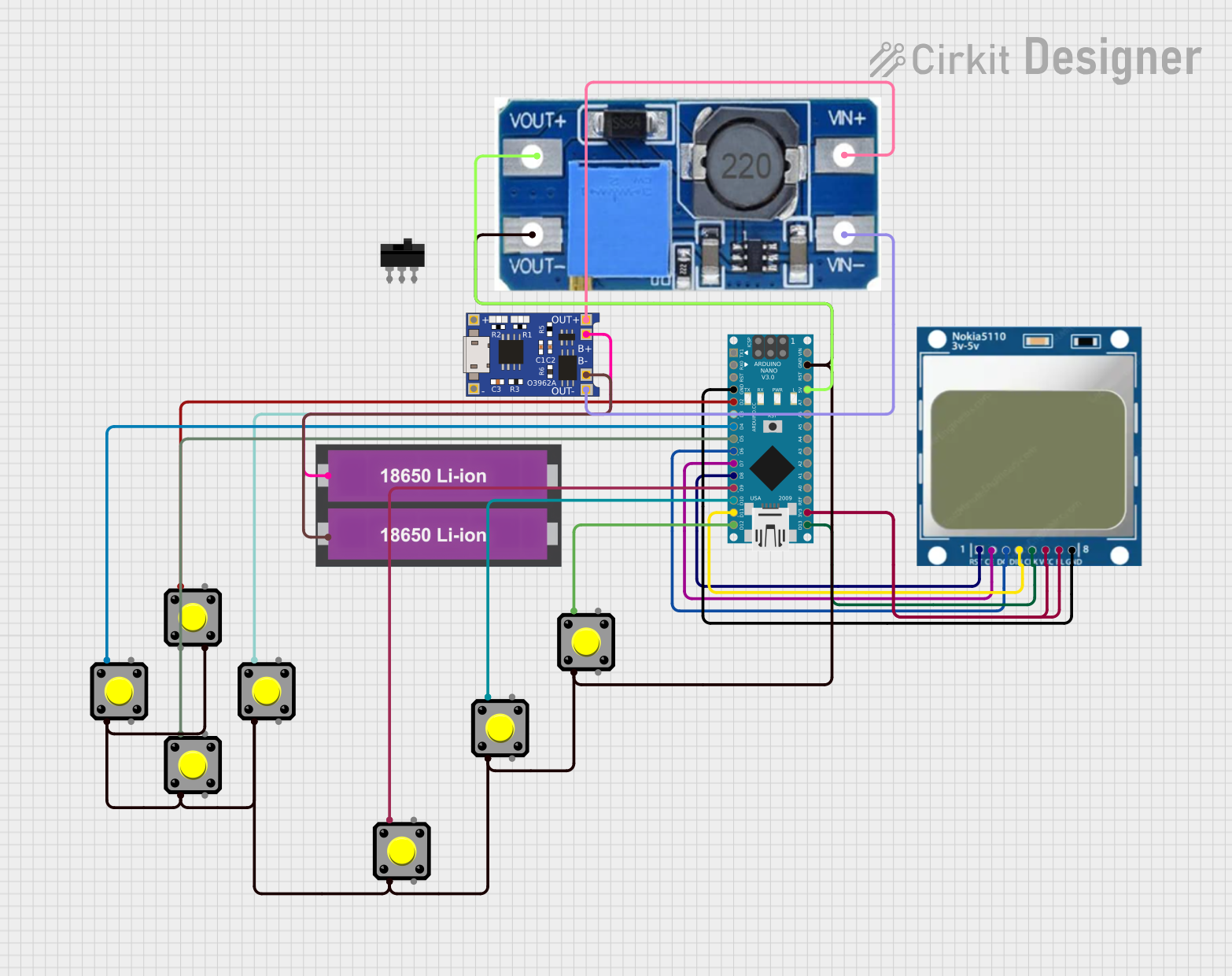
 Open Project in Cirkit Designer
Open Project in Cirkit DesignerExplore Projects Built with TP5100

 Open Project in Cirkit Designer
Open Project in Cirkit Designer
 Open Project in Cirkit Designer
Open Project in Cirkit Designer
 Open Project in Cirkit Designer
Open Project in Cirkit Designer
 Open Project in Cirkit Designer
Open Project in Cirkit DesignerCommon Applications
- Battery-powered devices (e.g., portable electronics, IoT devices)
- Power management in embedded systems
- Low-dropout voltage regulation for sensitive circuits
- Applications requiring thermal protection and high efficiency
Technical Specifications
Key Technical Details
| Parameter | Value |
|---|---|
| Input Voltage Range | 4.5V to 18V |
| Output Voltage Range | Adjustable (1.2V to 12V) |
| Maximum Output Current | 2A |
| Dropout Voltage | 0.2V (at 1A load) |
| Efficiency | Up to 90% |
| Thermal Protection | Yes |
| Operating Temperature | -40°C to +85°C |
| Package Type | SOP-8 |
Pin Configuration and Descriptions
| Pin Number | Pin Name | Description |
|---|---|---|
| 1 | VIN | Input voltage pin (4.5V to 18V) |
| 2 | GND | Ground pin |
| 3 | VOUT | Regulated output voltage pin |
| 4 | ADJ | Adjustable voltage pin (connect resistor divider) |
| 5 | EN | Enable pin (active high, logic level control) |
| 6 | NC | No connection (leave unconnected) |
| 7 | NC | No connection (leave unconnected) |
| 8 | NC | No connection (leave unconnected) |
Usage Instructions
How to Use the TP5100 in a Circuit
- Power Input: Connect the input voltage (4.5V to 18V) to the
VINpin. Ensure the input voltage is within the specified range. - Output Voltage Adjustment: Use a resistor divider network connected to the
ADJpin to set the desired output voltage. Refer to the formula in the datasheet for precise calculations. - Enable Pin: Connect the
ENpin to a logic high signal (e.g., 3.3V or 5V) to enable the regulator. Pulling this pin low disables the output. - Output Connection: Connect the load to the
VOUTpin. Ensure the load does not exceed the maximum output current of 2A. - Ground Connection: Connect the
GNDpin to the circuit ground.
Important Considerations and Best Practices
- Thermal Management: Ensure proper heat dissipation by using a heatsink or placing the component on a PCB with adequate thermal vias.
- Input Capacitor: Place a low-ESR capacitor (e.g., 10µF) close to the
VINpin to stabilize the input voltage. - Output Capacitor: Use a low-ESR capacitor (e.g., 22µF) at the
VOUTpin to ensure stable operation and reduce output noise. - Enable Pin: If the enable function is not required, connect the
ENpin toVINto keep the regulator always enabled.
Example: Connecting TP5100 to an Arduino UNO
The TP5100 can be used to power an Arduino UNO by regulating a higher input voltage (e.g., 12V) down to 5V. Below is an example circuit and Arduino code to control the EN pin.
Circuit Diagram
- Connect a 12V power source to the
VINpin. - Connect the
VOUTpin to the Arduino UNO's 5V input. - Use a GPIO pin from the Arduino to control the
ENpin.
Arduino Code
// Define the pin connected to the TP5100 EN pin
const int enablePin = 7;
void setup() {
// Set the enable pin as an output
pinMode(enablePin, OUTPUT);
// Enable the TP5100 by setting the pin HIGH
digitalWrite(enablePin, HIGH);
// Optional: Add a delay to allow the regulator to stabilize
delay(100);
}
void loop() {
// The TP5100 remains enabled in this example
// Add your main code here
}
Troubleshooting and FAQs
Common Issues and Solutions
| Issue | Possible Cause | Solution |
|---|---|---|
| No output voltage | EN pin not connected or set to LOW |
Ensure the EN pin is connected to HIGH |
| Output voltage is unstable | Insufficient output capacitor | Use a low-ESR capacitor (e.g., 22µF) |
| Overheating | Excessive load or poor thermal design | Reduce load or improve heat dissipation |
| Incorrect output voltage | Resistor divider miscalculated | Verify resistor values and connections |
FAQs
Can the TP5100 handle 3.3V output?
- Yes, the TP5100 can be configured for 3.3V output using the appropriate resistor divider.
What happens if the input voltage exceeds 18V?
- The TP5100 may be damaged. Always ensure the input voltage is within the specified range.
Is the TP5100 suitable for powering microcontrollers?
- Yes, the TP5100 is ideal for powering microcontrollers due to its stable output and low dropout voltage.
Can I leave the
ADJpin unconnected?- No, the
ADJpin must be connected to a resistor divider to set the output voltage.
- No, the